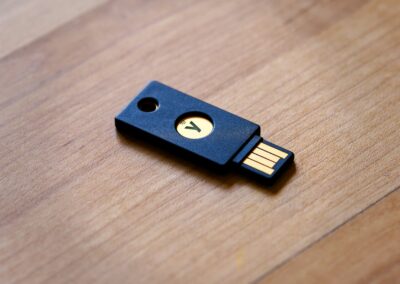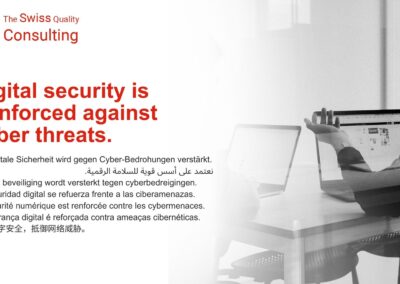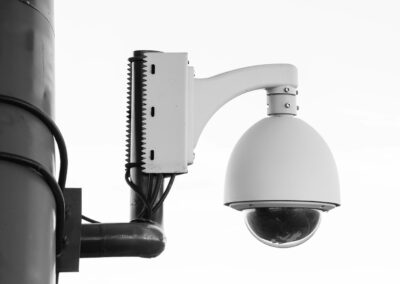Understanding Zero Trust Security
The Evolution of Zero Trust Security
In today’s digital age, cyber threats are becoming increasingly sophisticated, posing significant risks to businesses worldwide. To counter these threats, organizations are adopting Zero Trust Security (ZTS) frameworks. Zero Trust is not merely a set of technologies but a strategic approach that assumes no user or device, inside or outside the network, can be trusted by default. This paradigm shift requires continuous verification of every request as if it originates from an open network.
The evolution of Zero Trust Security is driven by the need to address complex security challenges. Traditional security models, which focused on perimeter defenses, are no longer sufficient. Cyber attackers have found ways to bypass these defenses, exploiting vulnerabilities within the network. As a result, Zero Trust Security has emerged as a robust framework that emphasizes “never trust, always verify.”
Business executives, mid-level managers, and entrepreneurs in regions like Saudi Arabia, UAE, Riyadh, and Dubai are increasingly recognizing the importance of adopting Zero Trust Security to protect their digital assets. By implementing this framework, organizations can ensure that access to resources is granted based on strict identity verification and adherence to least-privilege principles. This approach significantly reduces the risk of unauthorized access and data breaches.
Core Principles of Zero Trust Security
The Zero Trust Security model is built on several core principles that organizations must adopt to enhance their cybersecurity posture. These principles include continuous authentication and authorization, micro-segmentation, and least-privilege access. Continuous authentication and authorization involve verifying the identity of users and devices at every access request, regardless of their location within the network. This approach ensures that only authorized entities can access sensitive resources.
Micro-segmentation is another critical aspect of Zero Trust Security. It involves dividing the network into smaller segments and applying security controls to each segment. By isolating different parts of the network, organizations can limit the lateral movement of attackers and contain potential breaches. This granular level of control allows for more effective monitoring and response to security incidents.
Least-privilege access is a fundamental principle that restricts users and devices to the minimum level of access necessary to perform their tasks. This minimizes the potential damage that can be caused by compromised accounts or devices. By enforcing strict access controls and continuously monitoring user activity, organizations can detect and respond to suspicious behavior in real-time.
Implementing Zero Trust Security in the Business Environment
Adopting Zero Trust Security requires a strategic approach and a thorough understanding of the organization’s unique security needs. Business leaders in Saudi Arabia, UAE, Riyadh, and Dubai must first assess their current security posture and identify areas where Zero Trust principles can be applied. This involves conducting a comprehensive risk assessment to determine potential vulnerabilities and threats.
Once the assessment is complete, organizations can begin implementing Zero Trust Security by deploying identity and access management (IAM) solutions, network segmentation tools, and continuous monitoring systems. IAM solutions play a crucial role in verifying the identity of users and devices, ensuring that access is granted based on predefined policies. Network segmentation tools help isolate different parts of the network, while continuous monitoring systems provide real-time visibility into network activity.
To ensure the successful implementation of Zero Trust Security, organizations must also invest in training and awareness programs for their employees. Cybersecurity is a shared responsibility, and employees must understand the importance of adhering to security policies and practices. Executive coaching services can help business leaders develop effective communication strategies and foster a culture of security within the organization.
Future Trends and Innovations in Zero Trust Security
AI and Machine Learning in Zero Trust Security
Artificial Intelligence (AI) and Machine Learning (ML) are poised to revolutionize Zero Trust Security by enhancing threat detection and response capabilities. AI and ML algorithms can analyze vast amounts of data to identify patterns and anomalies that may indicate a cyber threat. These technologies can provide real-time insights into network activity, enabling organizations to detect and mitigate threats before they cause significant damage.
In regions like Riyadh and Dubai, where technological innovation is a key driver of economic growth, businesses are increasingly adopting AI and ML solutions to bolster their cybersecurity defenses. By integrating AI and ML into Zero Trust Security frameworks, organizations can achieve greater accuracy and efficiency in threat detection and response. These technologies can also automate routine security tasks, freeing up valuable resources for more strategic initiatives.
Moreover, AI and ML can enhance user behavior analytics (UBA) by continuously monitoring user activity and identifying deviations from normal behavior. This allows organizations to detect insider threats and compromised accounts more effectively. By leveraging AI and ML, businesses can stay ahead of evolving cyber threats and protect their digital assets with greater precision.
The Role of Blockchain in Zero Trust Security
Blockchain technology offers promising solutions for enhancing Zero Trust Security by providing secure and transparent methods for identity verification and data integrity. Blockchain’s decentralized nature ensures that data is stored across multiple nodes, making it more resistant to tampering and unauthorized access. This makes blockchain an ideal technology for verifying the identity of users and devices in a Zero Trust environment.
In Saudi Arabia and the UAE, where digital transformation is a key priority, organizations are exploring the potential of blockchain to enhance their cybersecurity frameworks. Blockchain can be used to create immutable records of user activity, providing a tamper-proof audit trail that can be used for compliance and forensic investigations. Additionally, blockchain-based identity management systems can provide more secure and efficient methods for authenticating users and devices.
By integrating blockchain technology into Zero Trust Security frameworks, organizations can achieve greater transparency and accountability. This can enhance trust with stakeholders and customers, as they can be assured that their data is being handled securely and ethically. Blockchain can also facilitate secure data sharing between organizations, enabling more effective collaboration in addressing cyber threats.
Conclusion
The future of cybersecurity lies in the adoption of innovative technologies and frameworks like Zero Trust Security. As cyber threats continue to evolve, organizations must stay ahead by implementing advanced security measures that prioritize identity verification, continuous monitoring, and least-privilege access. Business executives, mid-level managers, and entrepreneurs in Saudi Arabia, UAE, Riyadh, and Dubai must recognize the importance of Zero Trust Security and invest in the necessary tools and strategies to protect their digital assets.
By embracing AI, ML, and blockchain technologies, organizations can enhance their Zero Trust Security frameworks and achieve greater resilience against cyber threats. Executive coaching services can further support business leaders in navigating the complexities of cybersecurity and fostering a culture of security within their organizations. As the cybersecurity landscape continues to evolve, staying informed about the latest trends and innovations will be key to maintaining a robust and effective security posture.
#ZeroTrustSecurity #CybersecurityTrends #AIinSecurity #BlockchainSecurity #BusinessSuccess #LeadershipSkills #ProjectManagement #SaudiArabia #UAE #Riyadh #Dubai #ExecutiveCoaching #GenerativeAI #TheMetaverse #ModernTechnology























